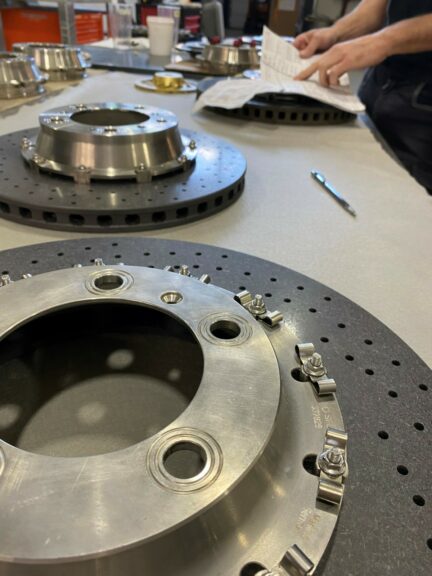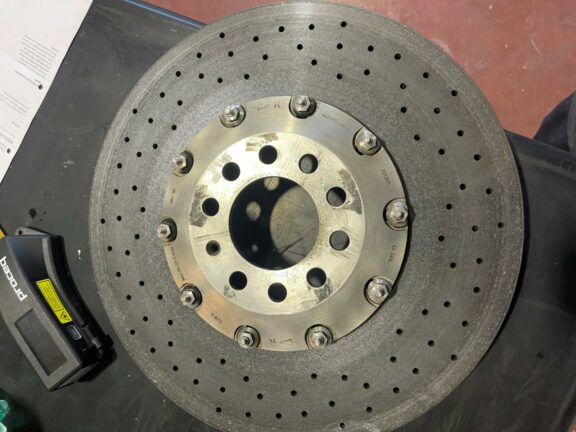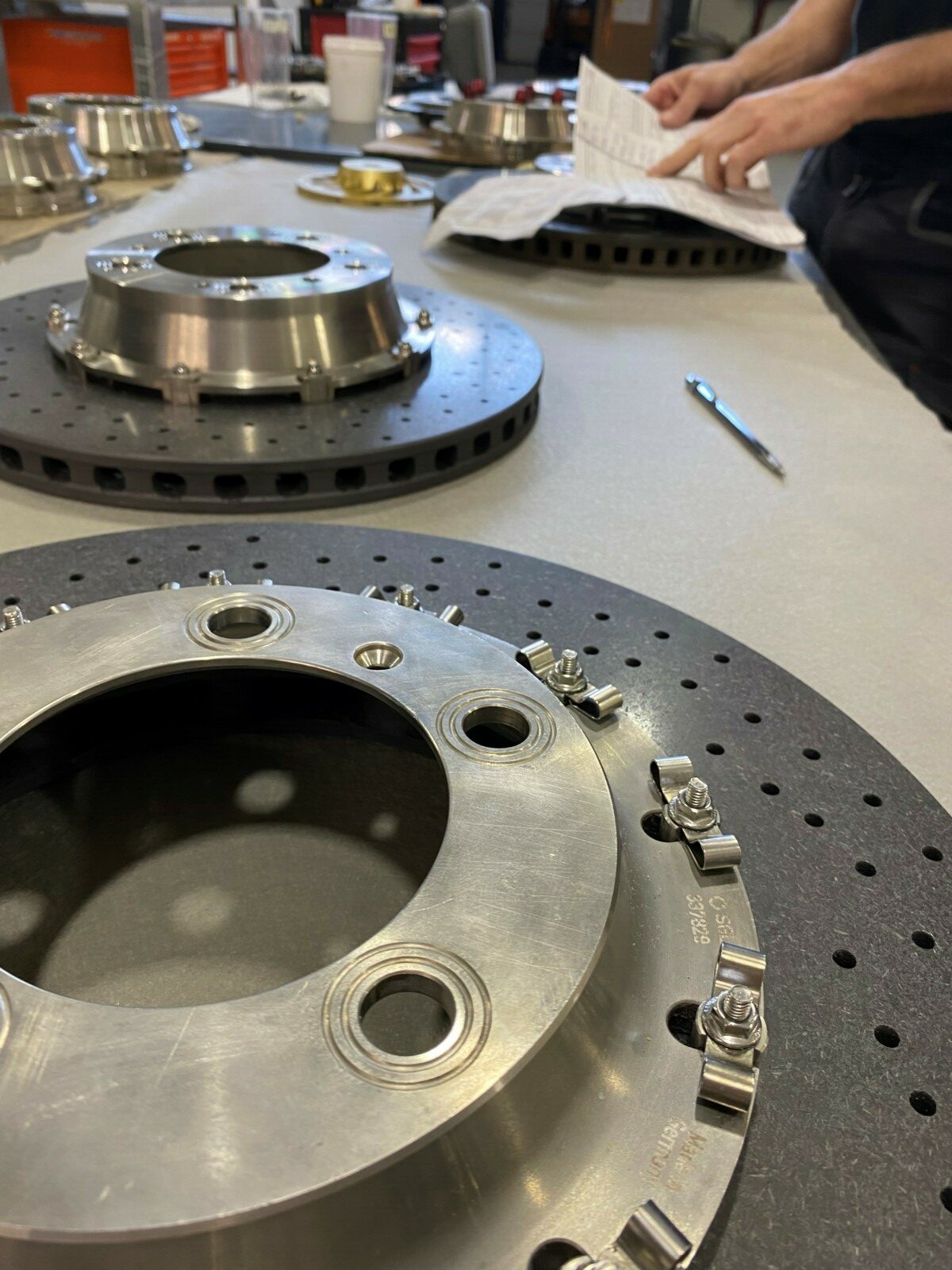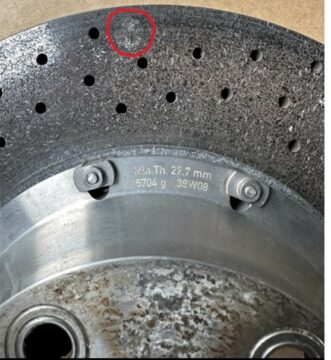Carbon ceramic rotors, also known as ceramic composite rotors, are a type of brake rotor that are made of a carbon-fiber-reinforced ceramic material. They contain Carbon Fibers and SiC.
You can read more also here: https://www.redisc.si/en/news/how-are-carbon-ceramic-discs-made/
Pros of having Carbon Ceramic Brake Rotors.
They are known for their high durability and resistance to wear and tear, but like any other brake rotor, they will eventually wear out. However, carbon ceramic rotors typically last much longer than traditional iron brake rotors and can last up to several times as long, depending on the specific usage and driving conditions. They are also resistant to thermal cracking and fading, which makes them ideal for high-performance vehicles and track use. Of course, longevity depends on many factors:
- The core structure
- The usage (warm up and cool down).
How to know if carbon ceramic rotors are worn out?
- Worn rotors are rough and start to delaminate. They should be smooth like glass. They can have some life left or a little rough or pitted.
- Rough rotors will also »eat« / use pads very quickly.
- When driving, your braking path is longer.
- Check your mileage / driven kilometers and age. More than 10 years or +150.000 km is a must.
- Visual changes (mechanical surface damage, discoloration, highly rough surface).
- The disc weight is closer to the minimum weight or thickness.
- Decrease in Carboteq values below the minimum value.
Here is also a video to check https://www.youtube.com/watch?v=VSK7GWNIQjY how the professionals are checking the discs.

Refurbished CCB for Porsche 997.
We are seeing lots of discs that look OK, but have the minimum values of Carboteq. If discs are too precious, they can break and cause very high costs of repair.
Carbon Ceramic discs are a very important part of your car that can cause huge costs and can jeopardize your safety if you do not pay attention what is happening with them.

Audi S8, CCB – before refurbishement.

